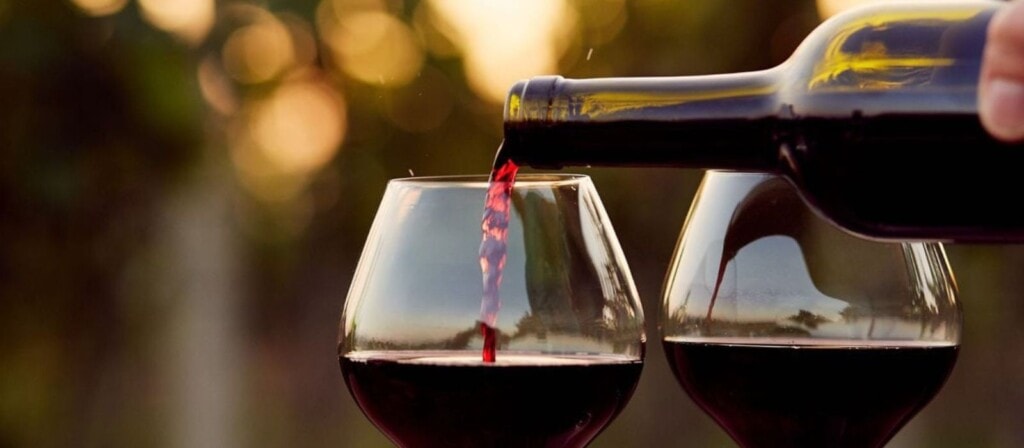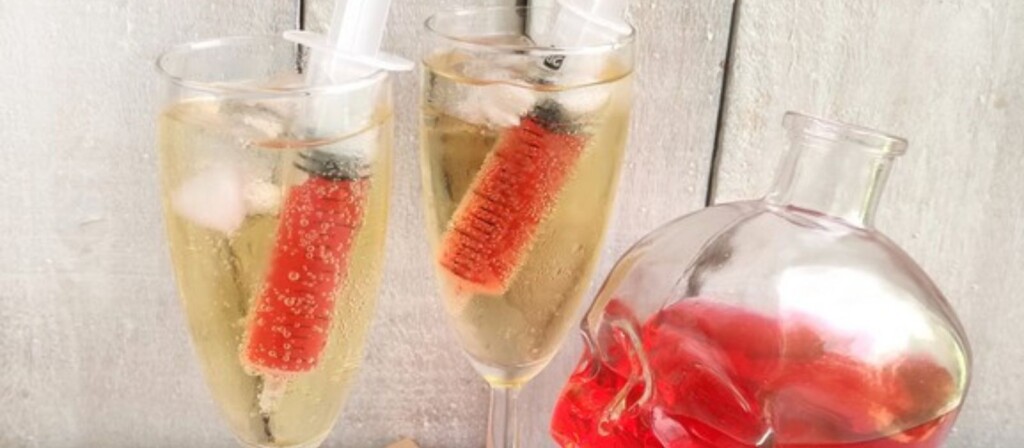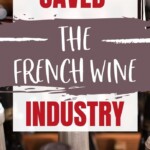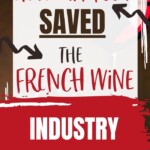Disclosure of Material Connection: Some of the links in the post above are "affiliate links." This means if you click on the link and purchase the item, I will receive an affiliate commission. Regardless, I only recommend products or services I use personally and believe will add value to my readers. I am disclosing this in accordance with the Federal Trade Commission's 16 CFR, Part 255: "Guides Concerning the Use of Endorsements and Testimonials in Advertising."
I was recently asked to participate in an interview for Cask88’s YouTube channel. Where we talked about how the French wine industry was brought to its knees in the latter stages of the 19th century. How whisky was able to benefit. For this article I want to discuss what happened to the French wine industry during this time and how it was able to recover. Thanks in large part to North America. In the article we’ll spend time going through just how bad the situation got for France’s wine industry. We will touch on the reasons why it took so long for a reasonable solution to be reached. Finally, we will talk in brief about the eventual solution and the men who championed it and how Norther America saved the French wine Industry.
The Golden Age
Today, French wines are seen by many as the best of the best. The standard bearer that all other winemaking regions across the world should aspire to. Some of the premium wines in Burgundy such as Domaine de la Romanée-Conti, and Bordeaux such as Château Pétrus, command jaw droppingly high prices no matter the vintage. This was also the case in the first half of the 19th century when the Châteaux of Bordeaux and Burgundy reigned supreme. You could say that the leading Châteaux in both of these regions were riding the crest of a wave, having been able to perfect their winemaking techniques over centuries to produce wines that were very similar in style to that we see today.
Napoleon’s wars hadn’t benefitted Bordeaux or Burgundy but it hadn’t hurt them either. France’s greatest rival, the English, still craved for the finest Bordeaux Clarets. With more affordable reds and whites still being popular in the Netherlands. Germany was beginning to take a keen interest in Bordeaux wines. Until approximately a third of all Bordeaux wine exports were headed in that direction. The United States, doubtless influenced by Jefferson’s love of Bordeaux claret. Was also displaying a keen interest and imports here rose sharply in the early 19th century. Brandy remained ever popular in the US too. It experienced its first cocktail boom and Brandy was the base drink for many of these cocktails.
Popular publications such as Bordeaux, its Wines and the Claret Country was published in 1846 and the book, known affectionately today as the Bordeaux Bible, garnered great interest in England for claret. It was then published in French four years later, opening up new markets in the French speaking world and is still published to this day where it contains over 8,000 properties!
Political Factors
Political factors also had a significant part to play. The reduction of tax duties on Cognac by British Prime Minister Robert Peel in the 1840’s allowed imports to double within six years. The Anglo-French trade treaty of 1860 meant that the duties paid on French table wine was one-twentieth of what it had been in 1860. Wine imports to Britain grew six-fold in a short space of time. By the 1880’s French wine was enjoying 40% of the Market share. Britons were so enamored with the tax cuts that wines from Bordeaux became known as “Gladstone Claret”. Named after the British Chancellor of the Exchequer William Gladstone, who had introduced the cuts.
The Age of Panic
By the middle of the 19th century however, the industry was beset with problems. The US Civil War ruined Brandy imports as there was no longer a market for Cognac in the south. In 1870, Napoleon III decided to pick a fight with Prussia and lost, badly. All of the major battles were fought within a month and Napoleon III himself was briefly captured by the Prussians. The war only ended when France agreed to pay Prussia 1400 tons of gold and to raise the funds. The new French Republic raised duties on wine. Riots soon followed. Bordeaux was just recovering from vine disease or oidium, which was indiscriminate in its destruction and which had halved harvests in certain years. It was then hit by its second and most serious malady. Phylloxera.
In 1863, some vineyards in Provence had noticed that their vines were displaying “consumptive symptoms”. Which would lead to the vines dying after about three years. The issue gathered pace and by 1868 enough of a fuss was made that Jules-Emile Planchon. A professor at Montpellier University decided to investigate. Planchon and his assistants convened at Chateau de Lagoy, one of the many estates that had been infected by this malady. They noticed around them that healthy vines were interspersed with the dead and dying. It wasn’t until they pulled up a healthy vine that the problem was discovered. The vine was teeming with microscopic lice which appeared to be eating away at the roots. They had not been noticed before as only dead vines had been pulled up. By that time the lice had long moved on to eat a healthier vine.
Planchon and his assistants likened the lice to a species of aphid called Phylloxera. He then gave it the moniker Phylloxera vastatrix, the devastator. But what exactly was it and just how had it come to infest the vineyards in France?
The Age of Steam Travel
By the middle of the 19th century, England was at the height of its power and exerted great influence across the globe. One major hobby practiced by Victorians in England was botany and many amateur botanists imported hundreds of new and exotic species from all over the globe for study or cultivation. A lot of these new species came from North America.
The advent of the steamship also cut journey times from England to the United States from months to a matter of weeks which meant that plants were able to survive the journey. What nobody banked on, however, was that species of insects were now able to survive the journey too and one of these insects was Phylloxera.
In short, Phylloxera had hitched a ride on vines imported from North America by a London Botanist which means we have the English to thank for causing the problem!
The Age of Devastation
The little aphid became aptly named. From London, they made their way quickly to the vineyards of France where they would eat away at the roots of the vines. The wounds created would then allow other diseases to develop around the vine which would slowly kill it. They were rampant reproducers and once developed into fully fledged aphids, they would fly off from the leaves and be carried by the wind to nearby vines to continue their devastation.
By 1885 the French wine industry lay in ruins: Of the 2.5 million hectares of vines planted in France, 1.5 million hectares had been destroyed. In 1888, 23 million hectoliters of wine were produced which was down from 83.6 million hectoliters in 1875. In 1875, wine exports were worth 545 million francs to the French economy. By 1887 it was spending that same figure on importing wine from Spain, Italy and Germany.
Wages were halved to 1.5 francs and vineyards that had once sold for 12,000 francs per hectare were now selling for 600 francs per hectare as cornlands. Of all of the vines destroyed by Phylloxera, 30% of it was never to be replanted.
Brandy suffered greatly. Within 30 years of the onset of Phylloxera, 83% of Charente’s vineyards had been destroyed. The time taken to implement the cure also allowed vineyards across Eastern Europe to produce brandy of their own, calling it “Cognac” without any thought given to the quality of the contents. This ruined Cognac’s reputation.
Fed up with fraudsters and eager to fill the void left by the ailing wine industry, worldwide markets turned to other spirits. Whisky was one of the biggest beneficiaries of this shift and buoyed by similar tax cuts and technological advances in distillation, it was able to plug the gap and gain a lasting foothold in the alcohol industry.
The Age of Indecision
Whilst the onset of Phylloxera was swift, the French government’s reaction was anything but. Napoleon III was busy getting his backside handed to him by the Prussians and initially took little interest. The response from local government was also inadequate. A small reward was offered to anybody who could find the cure and some of the suggestions were blatantly stupid. They ranged from burying a toad in a jar under each vine to spraying the vines with holy water and even urine! What’s even more inconceivable was that scientists actually wasted precious time in testing and evaluating these suggestions.
As if that wasn’t bad enough, the actual answer had been well documented by the Romans. It had even been practiced by Hernan Cortes and his Spanish colonists in Mexico in the early 1500’s.
The American Influence
Enter Charles Valentine Riley.
C.V Riley, as he was often known, was a British born American Entomologist based in Missouri. He was among the first to notice that Phylloxera had been eating away at the vines of American Rootstocks for centuries. These rootstocks had evolved to such an extent that the roots had become resistant to the damage Phylloxera could cause. He relayed his discovery to Jules-Emile Planchon and was also among the first to suggest the eventual solution… to graft European vines with American Rootstocks.
It was a landmark discovery and one that Planchon knew could save the wine industry. From 1870 onwards, Riley was sending American rootstocks to Planchon in order to test his theory. And it worked.
Suggestion was met with initial skepticism from French winemakers. Due to the scale and cost of the undertaking. Many were also worried that the traditional taste of the wines would be lost. There had been limited success in dealing with Phylloxera through the deliberate flooding of vineyards and injecting carbon bisulphide into the roots of affected vines. So why change tact now? The problem was that both of these remedies had severe limitations in cost and application.
Bordeaux Winemakers
However, by 1881 Bordeaux winemakers accepted that grafting was the only viable option. The vineyards of Burgundy followed suit in 1887. It was a vast and costly undertaking. Entire vineyards needed to be replanted at great expense. Harvests from the new rootstocks would take a few years to bear fruit. The American vines themselves also brought with them a new disease labelled “Downey Mildew”. This caused devastation of its own before being swiftly brought under control.
Phylloxera took a while to infest the vineyards of Cognac but when they eventually took hold, they devastated the region. The chalky soils that had slowed Phylloxera’s progress were now toxic to the American vines and they wouldn’t grow in the region.
Enter, Thomas Volney Munson.
T.V Munson was born in Illinois and became a prominent horticulturalist. Eventually settling in Texas, he devoted much of his time in identifying and documenting American native grape species and planting them in his own vineyard. News of Munson’s research eventually filtered across the Atlantic. When a French delegation was sent to the U.S to look for other rootstock species that could survive the terroir in Cognac in 1887, they were keen to seek Munson’s advice. Together, the French Delegation spent a month riding the Red River Valley in Texas. With Munson and they found American vines growing in abundance in soils that were similar to soils in Cognac.
Eventually, Munson would recommend three species that would grow well in France, Vitis berlandieri, Vitis cinereal and Vitis cordifolia. Progress was slow and results were mixed but eventually hybridized versions of these rootstocks would take well to the soils in Cognac. Allowing production to gradually recover. Munson went on to recommend viable rootstocks that could grow in California too. Allowing it to become the flag bearer of a very strong American wine industry today.
For their work, C.V Riley and T.V Munson were well rewarded in France. Riley was named a Chevalier of the Legion of Honor in 1884 whilst Munson received the Order of Agricultural Merit from the Legion of Honor too. Munson was further honored when Cognac became sistered with his hometown of Denison, Texas in 1992. A partnership which still blossoms today.
A Second Golden Age
It should also be noted that the intervention of these two men was timely for the French wine industry because grafting allowed the industry to recover sufficiently enough to weather the storms of two world wars, the Great Depression and prohibition in the first half of the 20th century.
Today, we are enjoying a second golden age of winemaking, not just in France but across the globe. An age where it can be difficult to imagine just how close the French wine industry came to total collapse. Thankfully, the wines of Bordeaux and Burgundy have recovered and are once again excelling. But they occupy an industry that is far more diverse, where competition has never been fiercer. Wines from Spain, Italy, Australia, Argentina and Chile are among some of the most coveted in the world.
In California too, the wine industry is booming and the region boasts an array of wines that also take pride of place among the very best being produced today. All thanks to another masterstroke from Munson, who went to recommend viable rootstocks to grow in Californian soils not long after his triumph in France.
So, the next time you sit down and enjoy a glass of your favorite wine, remember that you’ll be drinking it from grapes produced via American rootstocks, suggested by two outstanding American horticulturalists. It’s quite the legacy. Thanks for reading how North America saved the French wine industry.
Further Reading
Hyams. E. Dionysus, A Social History of the Wine Vine, Sedgewick & Jackson, 1987
Johnson. H The Story of Wine, Mitchell Beazley, 1998
Ordish. G, The Great Wine Blight, Sedgewick & Jackson, 1987







